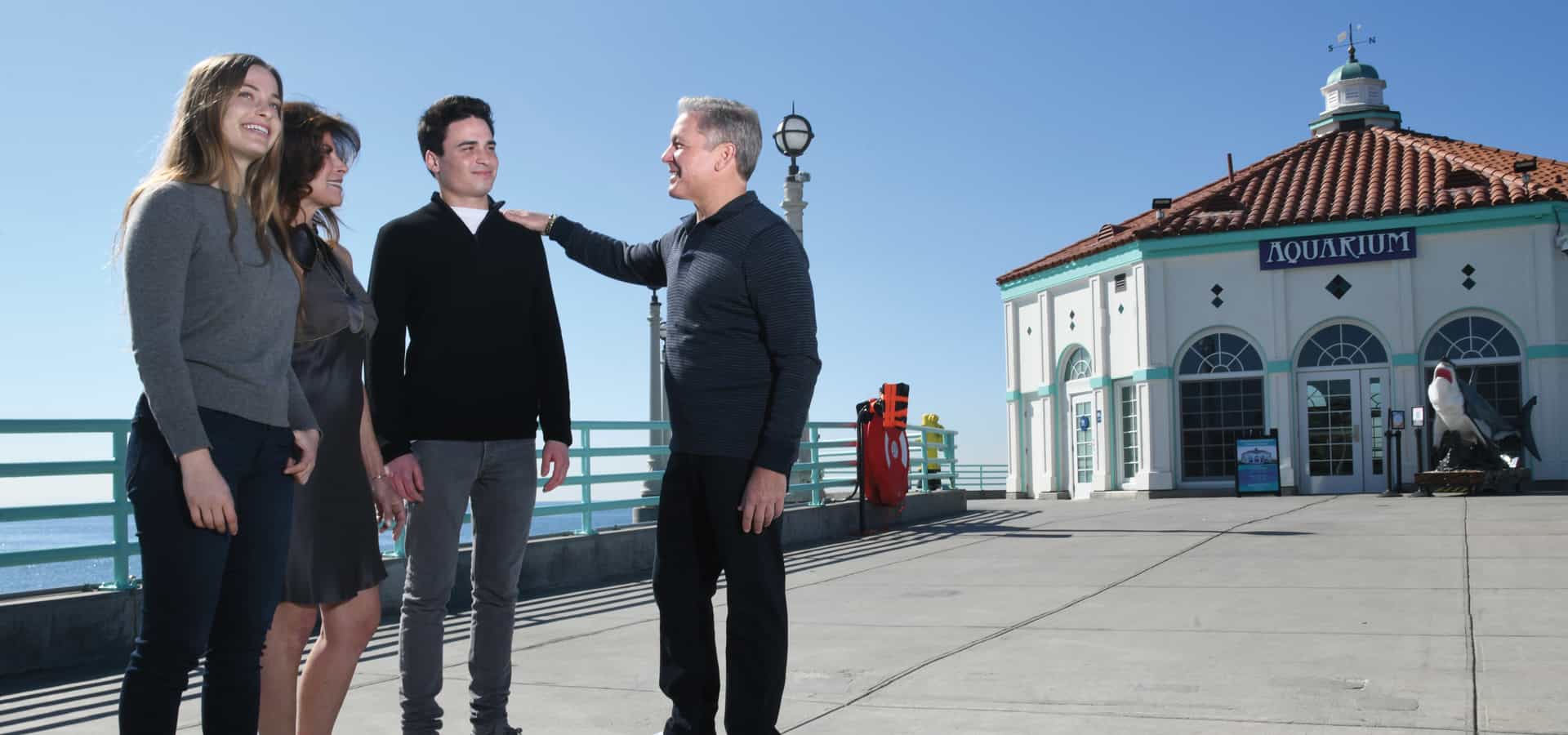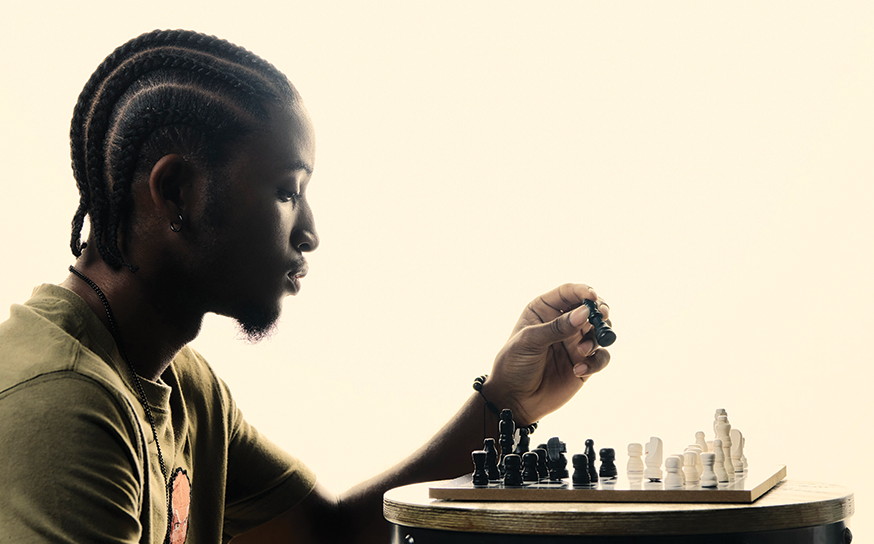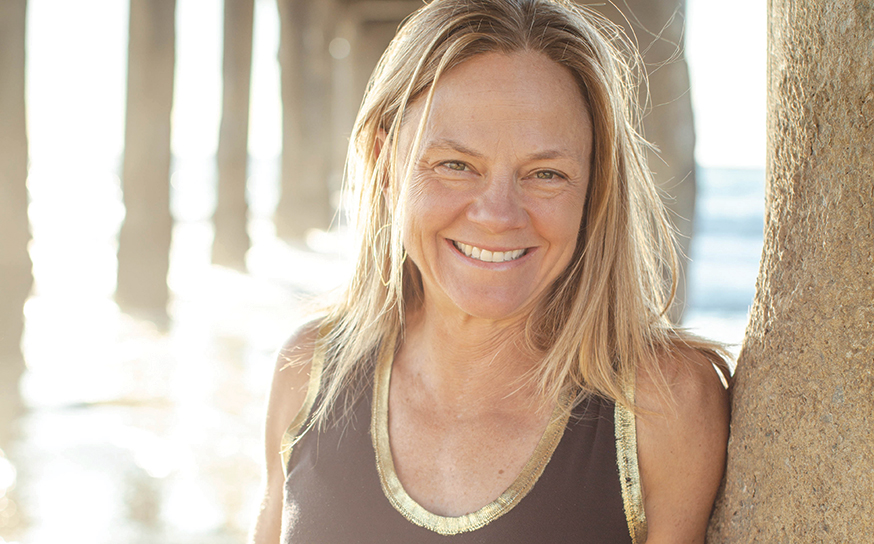A South Bay family turns the loss of a loved one into the reimagining of a treasured Manhattan Beach venue
It’s a circle of love.
- CategoryPeople
- Written byAmber Klinck
- Family Photographed byBo Bridges
Whether you’re inching your way down Vista Del Mar from the arrival gates at LAX or simply wrapping up your daily commute, seeing the Roundhouse Aquarium at the end of the Manhattan Beach Pier evokes a sense of home. Over the holiday season, we watch in wonder as fireworks fly over it. It’s the backdrop of countless photographs, and it caters to the curiosity of some of the South Bay’s youngest residents.
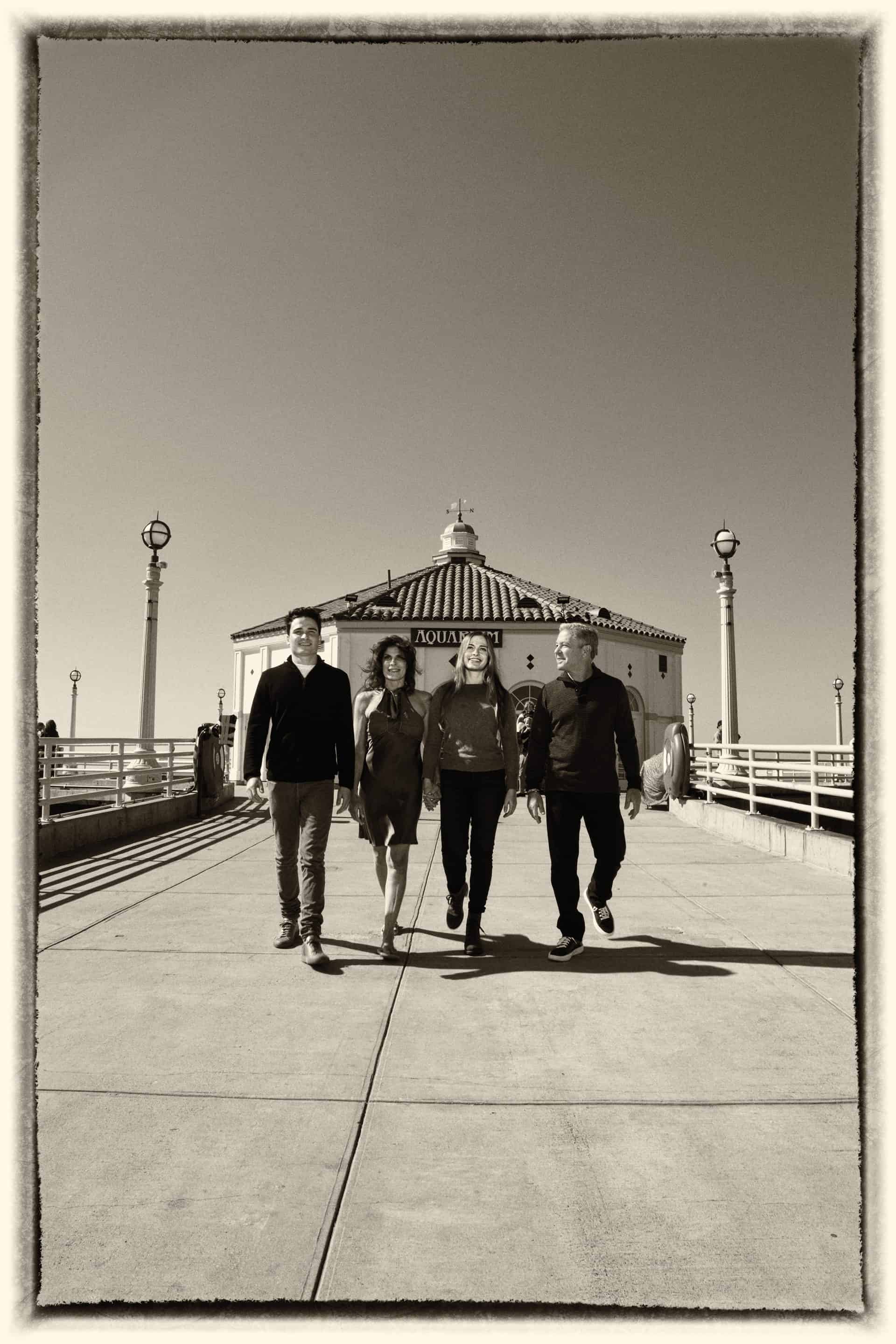
The mere structure is emblematic of Manhattan Beach. Initially built in 1922 as a pavilion, the Roundhouse evolved into an aquarium in 1979. If you’ve raised a family in the Beach Cities over the past four decades, chances are you’ve taken your little ones to peek at the marine life behind the glass or to examine the tiny creatures in the touch tanks.
Like clean beaches, The Strand or sun-filled Decembers, the Roundhouse is one of the great perks of South Bay life. Free of charge and open to the public, kids can pop in and pet a starfish, have a staring contest with an eel or learn about their impact on the ocean any day of the week.
For a young Harrison Greenberg, the aquarium was a place of wonder—a place where his inquisitive spirit could merge with his deep appreciation for the sea. Growing up near the water, Harrison was “fascinated by the ocean and loved marine life,” his mother, Wendy Greenberg, explains. “He spent the majority of his vacations from school and free time on the water.”
“His interest in exploring and learning as much as possible is one of the many things I have always admired in Harrison.”
Family trips to the Isthmus of Catalina Island were frequent. “We used to take the boat out, sometimes 12 times a year for a long weekend or up to two weeks at a time,” notes Harrison’s father and co-founder/president of Skechers, Michael Greenberg.
“He spent hours on the boat and in the ocean—swimming, snorkeling, scuba diving, jet skiing, tubing, fishing … I think he saw it as his second home, a place of entertainment, mystery and wonder with the multitude of life that exists in the vastness of the sea,” Wendy adds.
Harrison was curious in nature with a desire to absorb the world around him. “His interest in exploring and learning as much as possible is one of the many things I have always admired in Harrison,” Wendy says.
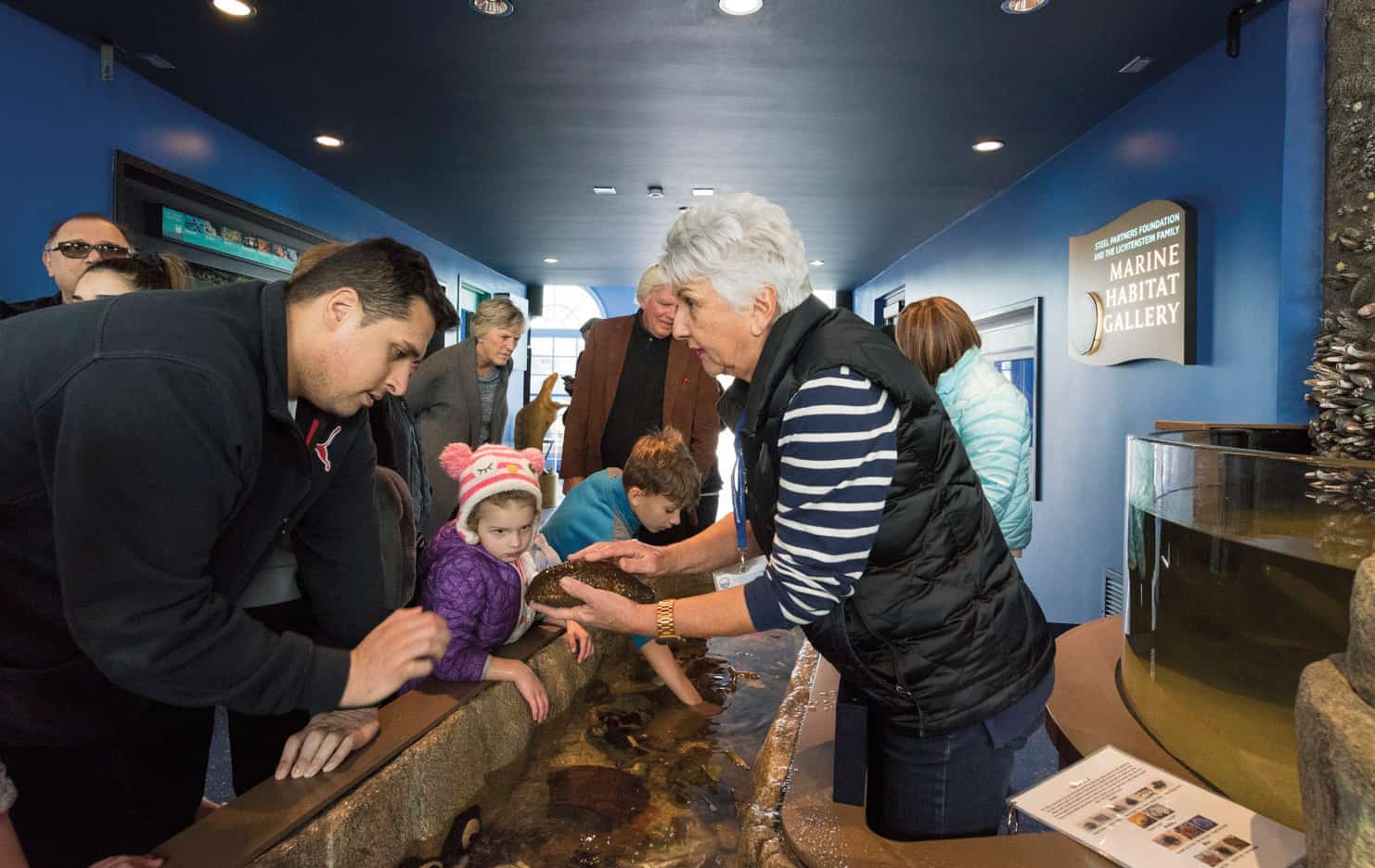
Tragically, Harrison’s curiosity was interrupted much too soon. In 2015 Harrison passed away unexpectedly at the age of 19. Within days there was an incredible outpouring of support, and the Harrison Greenberg Foundation was formed.
“People wanted to give,” explains Michael. “Within four or five days the donations were building and quickly reached a quarter of a million dollars. We knew we needed a foundation; we needed a cause.”
All signs pointed to the reimagining of the Roundhouse Aquarium, though the full extent of the project was yet to reveal itself. “I’m not sure if at the time I knew what I was getting myself into,” Michael says. “I visited [Roundhouse Aquarium board member] Lynn Gross with [executive director of the Harrison Greenberg Foundation] Robin Curren to talk about what the Harrison Greenberg Foundation could do on behalf of the Roundhouse. Lynn [initially] was thinking we might want to donate a bit of money into building a new fish tank, and I remember leaving and turning to Wendy and Robin and saying, ‘I’m not sure they understand quite what we want to do.’”
What Michael wanted to do was remodel the facility, but that idea would quickly evolve into something more. “We’re not going to remodel it. We’re going to take the old aquarium out, and we’re going to put a new aquarium in. That idea was born, it was forged, and at the time I think we thought it would take $1.5 million. It ended up costing nearly $4.5 million,” he notes.
Cost aside, there were many factors that needed to align for this project to come to fruition. “Just the whole process of bringing the teams together,” Michael says. “Working with [Oceanographic Teaching Stations], which is a nonprofit, working with the Harrison Greenberg Foundation, working with the city of Manhattan Beach—they’re the landlords of the pier. OTS is the tenant, the Harrison Greenberg Foundation is a nonprofit, and we’re creating a tri-party agreement. And remember, OTS is for education—so the education had to continue. Logistically we had to figure out how we were going to bring in an aquarium design firm and keep the teaching going on at the same time.”
The solution: temporary trailers to house the marine life and maintain a learning environment during construction.
The Roundhouse is a historic building, and maintaining the iconic look of the exterior while modernizing the interior was a priority to everyone involved. “It’s the most recognized structure in our city,” Michael says.
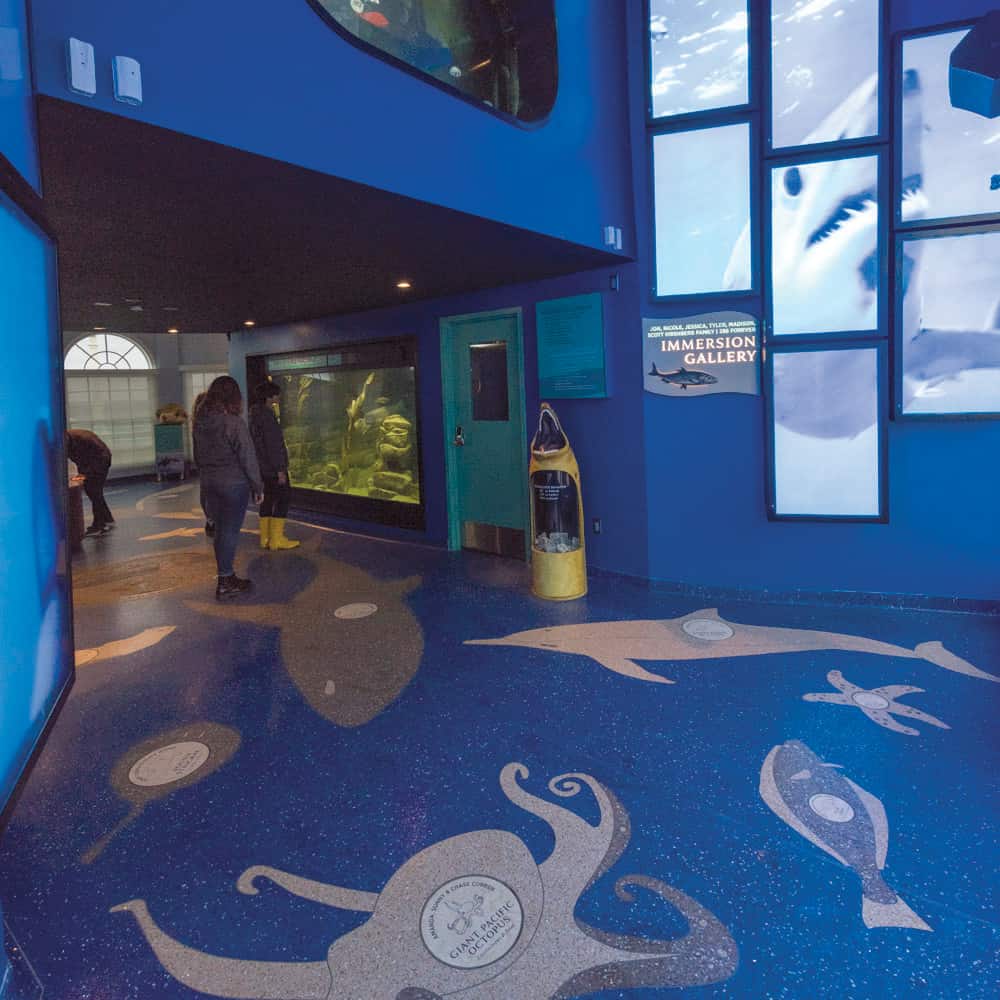
There was a plan, however, to move the entrance—to make it more appealing, more inviting. And there was controversy over whether or not the nearly 100-year-old café should be removed to make the change. “I envisioned looking west from the foot of the pier—looking into the natural aquarium and seeing the largest aquarium in the world: the Pacific Ocean,” Michael says.
Next time an epic sunset has you gazing out at the pier, notice the sunlight pouring through the front doors of the Roundhouse. It’s a view that’s never existed before.
“I get a lot of satisfaction of that being the first time in 100 years, or ever, that that’s possible,” Michael notes. “I didn’t know if we would prevail, and at any time I was in a position to stop because the entrance is so important. How many people go down to the pier, go toward the Roundhouse, but they don’t go in? The entrance was in an obscure location.”
On one hand, there were countless hurdles to overcome. On the other, things had a way of organically taking shape. “Having the support of the city council was tremendous,” Michael says.
“The new and improved Roundhouse feels welcoming and inviting—Harrison’s ‘new home’ where his memory can live on.”
And then there was the inclusion of Cambridge Seven architect Peter Sollogub. “I’m from Massachusetts,” Michael says. “We started to send out RFPs for aquarium architectural firms to bid on, and Cambridge Seven out of New England was one of them. They have built some of the most renowned aquariums in the world. This gentleman walks in, and I feel a unique bond. He reminded me of Harrison’s great-grandfather, who he never met and who was undeniably my favorite person in the world. His name was Harry. Harrison is English and means the son of Harry. I’m looking at him, and he’s from Boston and he looks like my grandfather did when I was a kid. I went with my gut—a wise decision.”
With the dream team in place, the interior of the Roundhouse was taken down to the studs. “When we gutted it, all you would see were the bones of the building,” Michael says. “You’re looking at wood that’s been there since 1992—the beams and all the drywall. Everything was taken out from all the plumbing to the electrical. The only thing standing was literally the shell.”
Today the project is complete, and the Roundhouse is again filled with kids eager to see and touch everything around them. “The new and improved Roundhouse feels welcoming and inviting—Harrison’s ‘new home’ where his memory can live on,” Wendy says.
Chase Greenberg, Harrison’s brother, finds himself back in the aquarium he once cherished as a child and avoided as a young man. “We would go to the pier, but we would generally not go into [the Roundhouse]—it was so run down. Now we go in every single time.” When he’s not on the pier, Chase has a clear view of the Roundhouse from his antique World War II binoculars positioned toward the structure.
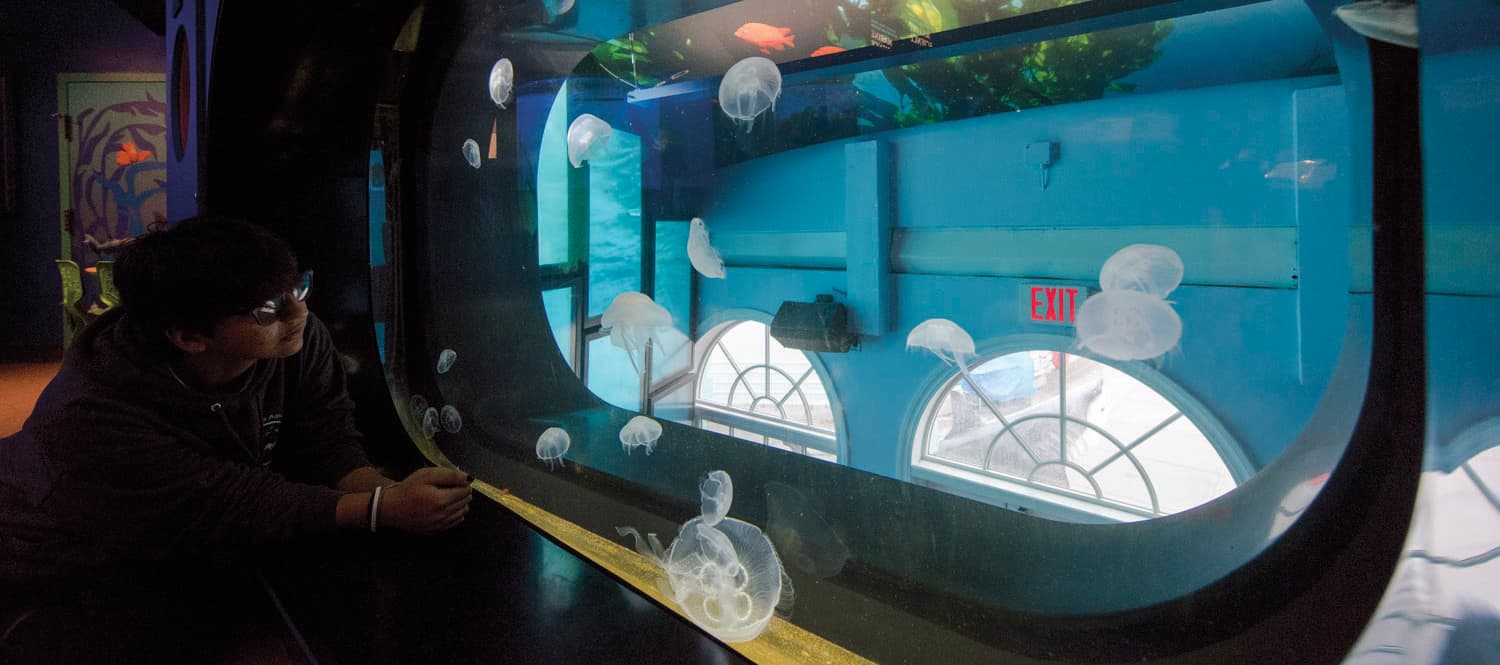
Since the aquarium’s opening, the reception from the community has been overwhelming positive. But the work is not done.
“The aquarium lives in a very corrosive environment—out on the water, wind, rain, storm and salt,” Michael says. “What I want people to take away is that it’s a wonderful gift to our community, it’s there for everybody to enjoy, and we need as much continued support as possible to keep it pristine. My job, our job did not come to an end when we opened the aquarium. We feel it’s just the beginning.”
The Harrison Greenberg Foundation’s sole focus is now dedicated to the sustainability of the aquarium. “In Harrison’s memory, this affords us to unite the passion he had for Manhattan Beach, the ocean and learning for all to enjoy,” Wendy says.
“I think [Harrison] would be very proud of everyone involved,” Michael adds. “Seeing the kids touching the fish tanks and the number of children and families in there today—how beautiful it is and the enjoyment and smiles on everybody’s faces—I think that would give him great pleasure because he was a real caring kid.”
Scanning through photographs recently taken by local photographer Bo Bridges, Michael stops at an image showcasing a rainbow stretched from the foot of the pier to the top of the Roundhouse. “You talk about what we did on behalf of Harrison, and I don’t want to be emotional, but I haven’t seen things like this before,” Michael says. “It’s so magical, and I just wonder: Why now?”
Wendy is delighted at seeing the “large, etched, bronze medallion bearing the image of my son’s face” on the floor near the entrance of the aquarium—a tribute to his memory. On the walls she sees the “many plaques of familiar and unfamiliar names who helped donate and make the Roundhouse as beautiful as it is today.”
But it’s the familiarity of the touch tanks that connect her to the past. “That was Harrison’s favorite part,” Wendy says. “I have very fond memories with Harrison, Chase and Mackenna in the Roundhouse—especially enjoying the touch tanks.”
Watching the children crowd around the new tanks, eyes wide open with tiny fingers reaching in … it’s nice to see some things never change.
Southbay ‘s Annual Spring Style Guide Has the Latest Fashion Trends, Jewelry, Home Goods and Gifts!
Shop local and support our amazing businesses.






